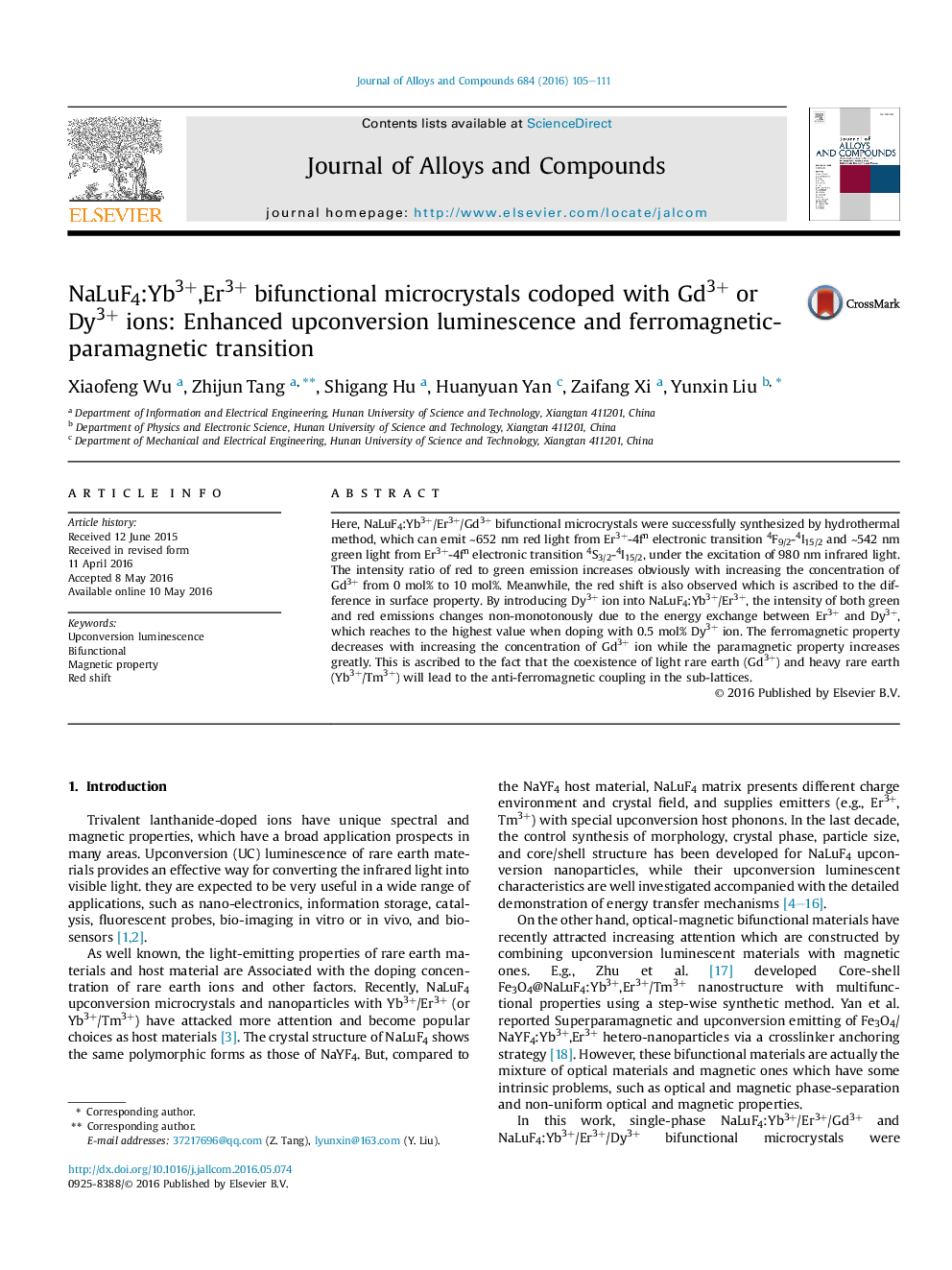| Article ID | Journal | Published Year | Pages | File Type |
|---|---|---|---|---|
| 1605223 | Journal of Alloys and Compounds | 2016 | 7 Pages |
•Optical-magnetic bifunctional microcrystals are successfully synthesized.•Upconversion luminescence with tunable intensity ratio of red to green emission.•Upconversion luminescence with unique red shift.•Room-temperature ferromagnetic NaLuF4:Yb3+/Er3+ to paramagnetic NaLuF4:Yb3+/Er3+/Gd3+.•Anti-ferromagnetic coupling in the sub-lattices.
Here, NaLuF4:Yb3+/Er3+/Gd3+ bifunctional microcrystals were successfully synthesized by hydrothermal method, which can emit ∼652 nm red light from Er3+-4fn electronic transition 4F9/2-4I15/2 and ∼542 nm green light from Er3+-4fn electronic transition 4S3/2-4I15/2, under the excitation of 980 nm infrared light. The intensity ratio of red to green emission increases obviously with increasing the concentration of Gd3+ from 0 mol% to 10 mol%. Meanwhile, the red shift is also observed which is ascribed to the difference in surface property. By introducing Dy3+ ion into NaLuF4:Yb3+/Er3+, the intensity of both green and red emissions changes non-monotonously due to the energy exchange between Er3+ and Dy3+, which reaches to the highest value when doping with 0.5 mol% Dy3+ ion. The ferromagnetic property decreases with increasing the concentration of Gd3+ ion while the paramagnetic property increases greatly. This is ascribed to the fact that the coexistence of light rare earth (Gd3+) and heavy rare earth (Yb3+/Tm3+) will lead to the anti-ferromagnetic coupling in the sub-lattices.
Graphical abstractOptical-magnetic bifunctional microcrystals are successfully synthesized, which show upconversion luminescence with tunable intensity ratio of red to green emission and present ferromagnetic or paramagnetic property with anti-ferromagnetic coupling in the sub-lattices.Figure optionsDownload full-size imageDownload as PowerPoint slide
